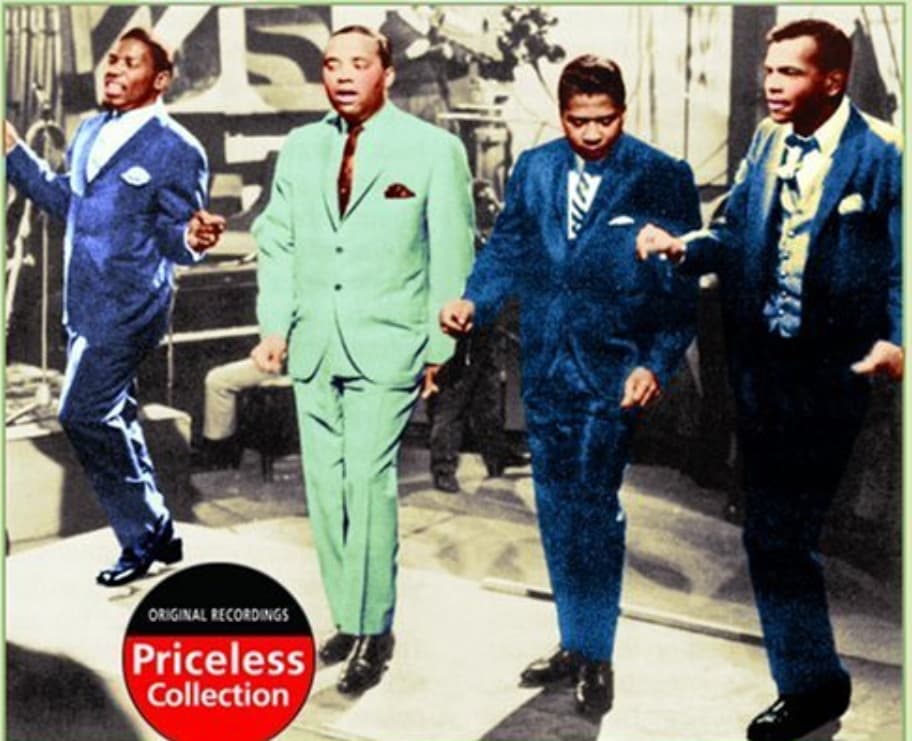
A poignant tale of love lost and the lingering echo of heartbreak.
Released in 1959, “There Goes My Baby” by The Drifters isn’t just a song; it’s a cultural landmark. Peaking at number 2 on the Billboard Hot 100 chart and reaching number 1 on the R&B charts, this track marked a significant turning point in popular music. It ushered in a new era, blending gospel influences with Latin rhythms—a sound that would become a hallmark of the early 1960s pop landscape, often referred to as “Latin soul”. This innovative sound was largely thanks to the brilliant songwriting and production of Jerry Leiber and Mike Stoller, along with the notable contributions of Ben E. King, then the lead singer of The Drifters.
Before Ben E. King took the lead, the Drifters had gone through several lineup changes and a period of relative commercial lull. Their manager, George Treadwell, made the bold decision to dismiss the entire group in 1958 and replace them with a group called The Five Crowns. This new lineup, featuring King, proved to be a stroke of genius, revitalizing The Drifters’ career and leading to a string of hits, starting with “There Goes My Baby”.
The song’s story is as compelling as its melody. It tells the universal tale of seeing a lost love move on, the heart-wrenching realization that someone you cherished is now beyond your reach. The lyrics are simple yet evocative, painting a vivid picture of regret and longing. The opening lines, “There goes my baby, there she goes,” immediately set the tone, conveying a sense of helplessness and resignation. This sentiment resonates deeply with anyone who has experienced the pain of a breakup, making “There Goes My Baby” an enduring anthem of heartbreak.
What truly sets “There Goes My Baby” apart is its groundbreaking use of instrumentation and production techniques. Leiber and Stoller incorporated a string section—a relatively uncommon feature in R&B at the time—adding a layer of sophistication and emotional depth to the song. The prominent use of a Latin-tinged bassline and percussion gave the track a distinctive groove, making it instantly recognizable and incredibly danceable. This fusion of musical styles was revolutionary, paving the way for countless artists who would later blend genres in similar ways.
The recording process itself was also quite innovative. Leiber and Stoller employed techniques like multi-tracking and overdubbing, which were still relatively new in the late 1950s. This allowed them to create a richer, more layered sound, further enhancing the song’s impact. The result was a record that sounded unlike anything else on the radio at the time, capturing the raw emotion of the lyrics while simultaneously pushing the boundaries of popular music.
“There Goes My Baby” is more than just a song; it’s a time capsule, transporting listeners back to a bygone era. It’s a reminder of the power of music to capture universal human experiences, and it stands as a testament to the genius of The Drifters, Leiber and Stoller, and Ben E. King. Its influence on subsequent generations of musicians is undeniable, solidifying its place as a true classic in the history of popular music. It is a song that continues to resonate with listeners of all ages, reminding us all of the enduring power of love, loss, and the memories they leave behind. The song was included in the 500 Songs that Shaped Rock and Roll list by the Rock and Roll Hall of Fame. It is a song that every generation can connect with.